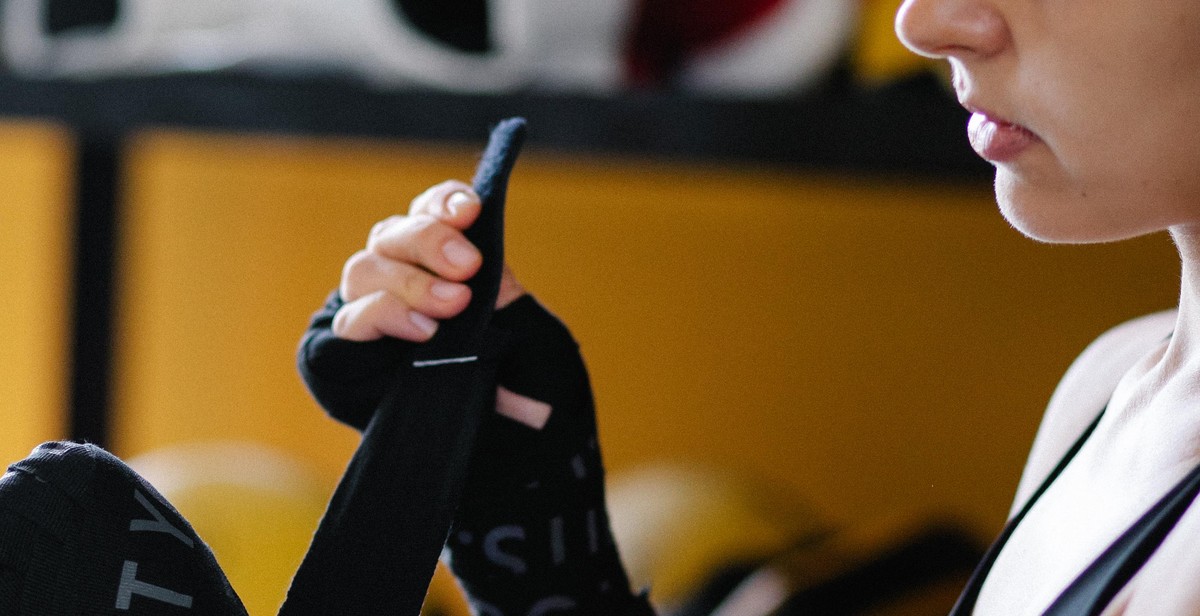How to Play the Djembe: Beginner’s Guide to Hand Techniques and Rhythms
The djembe is a versatile and popular West African drum that has gained worldwide recognition for its unique sound and cultural significance. Its name comes from the Bambara word “djembe,” which means “to gather together in peace.” Traditionally, the djembe was used for communication, ceremonies, and celebrations, and it continues to be an important part of African culture today.
What is a Djembe?
The djembe is a goblet-shaped drum made from a single piece of hardwood and covered with goat skin or other animal hides. The drum is played with bare hands, and the sound is produced by striking the drumhead with the fingers and palms of the hand. The djembe has a wide range of tones, from deep bass to high-pitched slaps, and can be played solo or in a group.
Why Play the Djembe?
Playing the djembe is not only a fun and engaging hobby, but it also has numerous health benefits. It can improve hand-eye coordination, boost cognitive function, reduce stress and anxiety, and enhance overall well-being. Additionally, playing the djembe can be a great way to connect with others and build a sense of community through music.
If you’re interested in learning how to play the djembe, this beginner’s guide will provide you with the hand techniques and basic rhythms you need to get started. Let’s dive in!

Getting Started: How to Play the Djembe
If you’re interested in learning how to play the djembe, you’re in the right place! This beginner’s guide will cover the basics of hand techniques and rhythms, as well as important aspects like choosing a djembe, tuning your instrument, and sitting with it properly.
Choosing a Djembe
The djembe is a West African drum that has gained popularity all around the world. When choosing a djembe, it’s important to consider the quality of the drum. A good djembe should be made from high-quality wood, with a well-crafted head that produces a clear sound. It’s also important to choose a drum that fits your body size – the drum should sit comfortably between your knees when you’re sitting down.
There are many different types of djembes available, including traditional African drums and modern variations. Traditional djembes are made by hand and have a unique sound that can’t be replicated by modern drums. However, modern djembes are often more affordable and easier to find. Ultimately, the best choice for you will depend on your budget, skill level, and personal preferences.
Tuning Your Djembe
Once you’ve chosen your djembe, it’s important to tune it properly. A well-tuned djembe will produce a clear, consistent sound that’s easy to play along with. To tune your djembe, start by tightening the ropes around the drumhead. You can use a drum key or your hands to tighten the ropes, but be careful not to over-tighten them – this can damage the drumhead.
As you tighten the ropes, listen to the sound of the drum. When the drum is properly tuned, you should be able to play a clear tone in the center of the drumhead, as well as a ringing tone around the edges. If you’re having trouble tuning your djembe, consider taking it to a professional for help.
Sitting with Your Djembe
When playing the djembe, it’s important to sit with the drum in the correct position. Start by sitting on the edge of a chair or stool, with your back straight and your feet flat on the ground. Place the djembe between your knees, with the drumhead tilted slightly away from you.
Rest the base of the drum on the ground, and hold the drum between your knees with your hands on the drumhead. Make sure that your hands are in the correct position – your dominant hand should be on top of the drumhead, while your other hand should be on the bottom.
Practice sitting with your djembe until you feel comfortable and stable. This will help you play with more control and precision.

Hand Techniques
Hand techniques are the most important aspect of playing the djembe. There are three basic hand techniques that every beginner should learn: the bass tone, the slap tone, and the muff tone.
Bass Tone
The bass tone is the foundation of the djembe sound. To produce this sound, place your non-dominant hand on the bottom of the drum, with your fingers pointing towards the center. Your dominant hand should then strike the drum near the edge, using the palm of your hand. This will create a deep, resonant sound.
Slap Tone
The slap tone is a sharp, high-pitched sound that is produced by striking the drum with the fingers of your dominant hand. To play a slap tone, hold your hand in a cupped position and strike the drum with the fingertips. This technique requires a lot of practice to master, but it is essential for creating complex rhythms.
Muff Tone
The muff tone is a muted sound that is created by placing your non-dominant hand on the drumhead immediately after playing a bass or slap tone. This technique is used to dampen the sound of the drum and create a staccato effect.
It is important to practice each of these hand techniques separately before attempting to combine them into rhythms. Start by practicing the bass tone, then move on to the slap tone, and finally the muff tone. Once you have mastered each technique individually, you can begin to combine them to create complex rhythms.
| Hand Technique | Description |
|---|---|
| Bass Tone | Deep, resonant sound produced by striking the drum with the palm of your dominant hand. |
| Slap Tone | Sharp, high-pitched sound produced by striking the drum with the fingertips of your dominant hand. |
| Muff Tone | Muted sound produced by placing your non-dominant hand on the drumhead immediately after playing a bass or slap tone. |

Basic Rhythms
Learning basic rhythms is essential for any beginner who wants to play the djembe. Here are some of the most popular rhythms to get you started:
Djembe Basics
Before diving into specific rhythms, it’s important to understand the basics of playing the djembe. The djembe is played with your hands and fingers, using a variety of techniques to create different sounds. Here are some basic hand techniques:
- Bass: This is the lowest sound you can produce on the djembe. To play the bass, hit the center of the drum with your open hand.
- Slap: This is a high-pitched, sharp sound. To play the slap, hit the edge of the drum with your fingers.
- Tone: This is a medium-pitched sound. To play the tone, hit the drum with the pads of your fingers.
Now that you have a basic understanding of hand techniques, let’s move on to some popular rhythms:
The Dununba Rhythm
The Dununba rhythm is a traditional Malinke rhythm that is often played during celebrations and festivals. Here is the basic structure of the Dununba rhythm:
| Beat | Djembe |
|---|---|
| 1 | Bass |
| 2 | Tone |
| 3 | Slap |
| 4 | Tone |
Practice playing this rhythm slowly at first, and gradually increase your speed as you become more comfortable with the hand techniques.
The Kuku Rhythm
The Kuku rhythm is another traditional West African rhythm that is often played during celebrations and festivals. Here is the basic structure of the Kuku rhythm:
| Beat | Djembe |
|---|---|
| 1 | Bass |
| 2 | Tone |
| 3 | Slap |
| 4 | Bass |
| 5 | Tone |
| 6 | Slap |
| 7 | Bass |
| 8 | Tone |
Again, practice playing this rhythm slowly at first, and gradually increase your speed as you become more comfortable with the hand techniques.

Advanced Techniques
Rolls and Flams
Rolls and flams are advanced techniques used to add texture and depth to your playing. A roll is a rapid succession of notes played with alternating hands. To execute a roll, begin by playing a single stroke with one hand, followed immediately by a stroke with the other hand. Continue this pattern, alternating hands, at a rapid pace to create a rolling sound. Flams, on the other hand, involve playing two notes with one hand in quick succession, with the second note being played louder than the first. To perform a flam, hit the drumhead with the palm of your hand followed immediately by a light tap with your fingers.
Improvisation
Improvisation is a skill that takes time and practice to develop, but it’s a great way to add your own personal touch to a performance. To improvise on the djembe, start by experimenting with different rhythms and hand techniques. Try to play around with the timing and dynamics of your playing, and don’t be afraid to take risks and try new things. It’s also important to listen closely to the other musicians you’re playing with and respond to what they’re playing.
Soloing
Soloing on the djembe is an advanced technique that requires a lot of skill and practice. To solo effectively, you’ll need to have a good understanding of rhythm and timing, as well as a wide range of hand techniques at your disposal. Start by practicing soloing over simple rhythms, and gradually work your way up to more complex patterns. It’s also important to pay attention to the dynamics of your playing, and to use silence and space to create tension and release in your solos.
Conclusion
Playing the djembe is an exhilarating experience that can bring joy to both the player and the audience. While it may seem intimidating at first, with practice and dedication, anyone can learn how to play this remarkable instrument.
In this beginner’s guide, we have covered the essential hand techniques and rhythms that you need to know to start playing the djembe. We have also discussed the importance of posture, breathing, and relaxation while playing.
Remember, the key to mastering the djembe is to practice regularly and remain patient with yourself. Don’t be discouraged by mistakes or setbacks; they are a natural part of the learning process.
If you are serious about becoming a skilled djembe player, consider taking lessons from a professional instructor. They can provide personalized guidance and feedback to help you improve your technique and develop your own unique style.
Finally, always remember to have fun while playing the djembe. Whether you are performing in front of an audience or playing for your own enjoyment, let the rhythms flow through you and embrace the joy of making music.
| Recommended Resources |
| Djembe Lessons Online |
| Djembe.net |
| Djembe.org |
